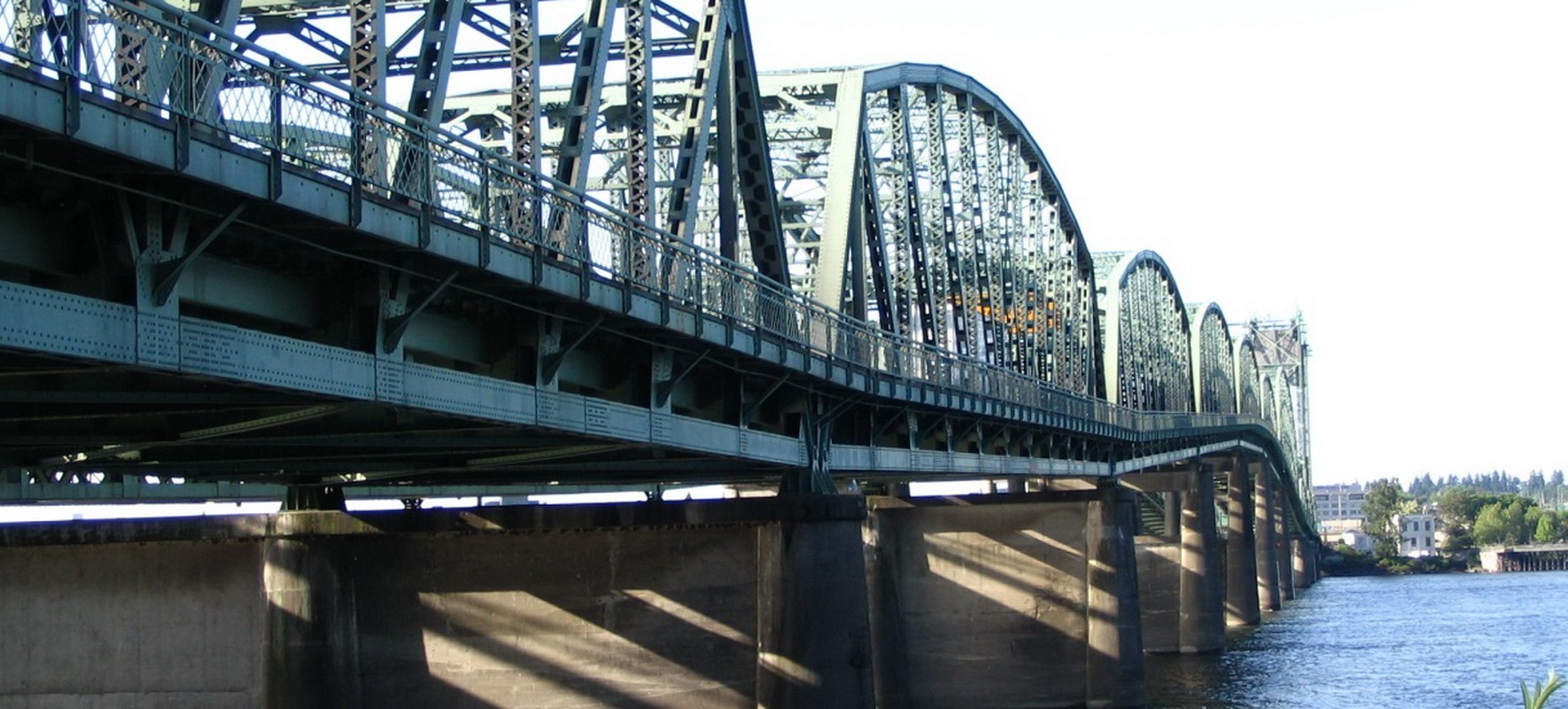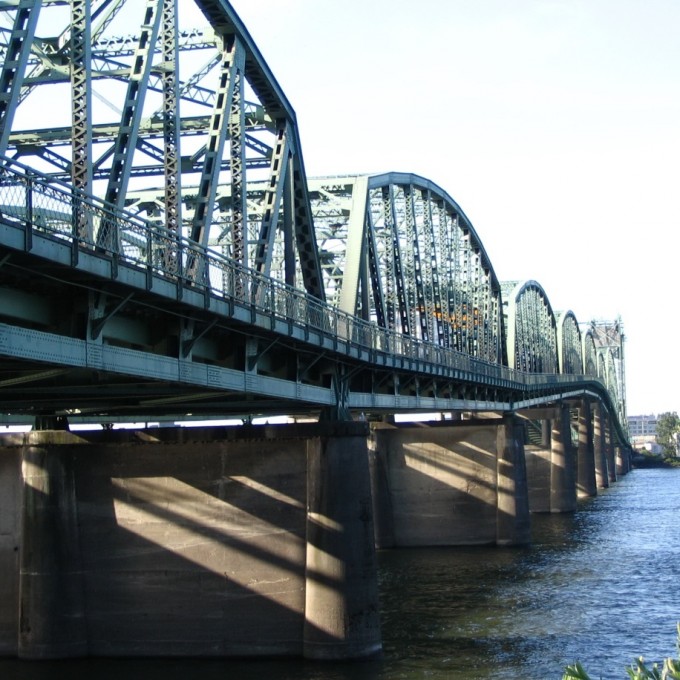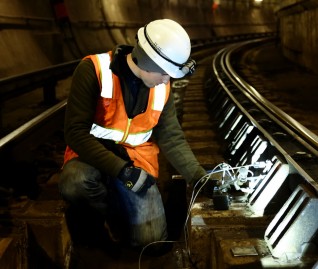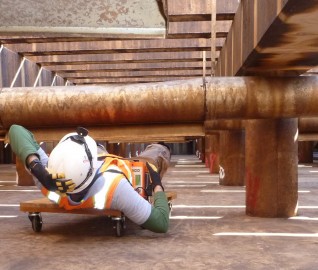WJE PROJECTS
I-5 Columbia River Bridge


CLIENT |
Oregon Department of Transportation (ODOT) |
LOCATION |
Portland, OR |
Investigation of Counterweight/Lift Span Mechanical System
The lateral balance and operation of the west lift span and counterweights have been problematic since construction. Concrete blocks were added to level the counterweights to prevent binding on the guide wheel tracks, but in 2012, the north counterweight shifted from its rails causing damage to the tower column. Since being rehabilitated in 2004, the operating rope drums have not properly aligned with the idle sheaves, causing wear on the ropes. In a series of projects, WJE investigated the performance of the lift span mechanical equipment.
BACKGROUND
The I-5 Bridge crosses the Columbia River between Portland, Oregon and Vancouver, Washington. Separate multi-span structures carry northbound and southbound traffic; each includes a 279-foot lift span capable of raising 136 feet over a marine channel. The east bridge was completed in 1917 and retrofitted in 1960, following completion of the companion west bridge in 1958. The weight of each lift span is balanced by two steel frame and reinforced concrete counterweights suspended from wire ropes over trunnion sheave wheels at the top of the towers.
SOLUTION
To complete the investigation of the counterweight system, WJE documented the number and location of concrete blocks, cored the counterweights to determine void locations, performed instrumentation of the operating rope turnbuckles and pinion shafts to measure span imbalance, and inspected the live load bearings and guide rollers to verify operation and condition. WJE recommended removal of some concrete blocks to adjust the counterweight balance. WJE engaged a local mobile welding service and certified welder to complete weld repairs to the damaged columns. To prevent future guide wheel binding or derailment, shims behind the guide rails were adjusted under WJE's direction to maintain even guide wheel contact the full height of the tower. Through high-precision laser alignment checks of the lift span shafts, drums and operating ropes, WJE concluded that regular lubrication of all mechanical system and operating ropes components would reduce wear and recommended repairs for the damaged and aging breaks, pinions, couplings, deflector sheaves, and ropes. WJE also developed a fitness for purpose evaluation of the existing sheave/trunnion assemblies using ultrasonic test methods so that these fracture critical elements can be routinely inspected.
RELATED INFORMATION
-
 Our knowledge of bridge performance is supported by technical expertise in structural... MORE >Services | Bridge Engineering
Our knowledge of bridge performance is supported by technical expertise in structural... MORE >Services | Bridge Engineering -
 We engage a full suite of state-of-the-art instrumentation and monitoring capabilities to test... MORE >Services | Instrumentation and Monitoring
We engage a full suite of state-of-the-art instrumentation and monitoring capabilities to test... MORE >Services | Instrumentation and Monitoring -
 Our professionals deliver practical repair and rehabilitation services that maximize the... MORE >Services | Repair and Rehabilitation
Our professionals deliver practical repair and rehabilitation services that maximize the... MORE >Services | Repair and Rehabilitation -
 When the integrity or condition of a structure is in question, clients rely on us for answers MORE >Services | Structural Engineering
When the integrity or condition of a structure is in question, clients rely on us for answers MORE >Services | Structural Engineering
































